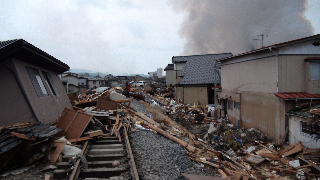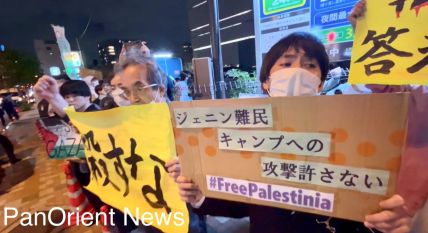|
|
Environment
Greenpeace Expands Radiation Team to Investigate Fukushima Fallout
Monday, April 4, 2011

Yonezawa, Japan, (PanOrient News) Greenpeace today announced the resumption of its radiation monitoring outside the evacuation zone surrounding the stricken Fukushima nuclear complex. Adding a second field team of radiation experts, the investigation into the health threats to the local population will offer food tests of milk and vegetables.
The current official evacuation zone is 20km around Fukushima, while between 20km and 30km is an area where people are advised to stay indoors or evacuate voluntarily.
Last week, Greenpeace called on the Japanese government to evacuate the contaminated areas outside the official zone, after confirming the authorities radiation data for the town of Iitate, where staying for just a few days could mean exposure to the annual allowable dose of radiation.
“More then three weeks have passed since the tsunami wreaked havoc at the Fukushima nuclear complex, yet the official response to the radiation risk continues to be sporadic and contradictory, leaving local populations confused and at risk. We hope to be able to provide independent analysis and clear advice to effected populations,” said Rianne Teule, Greenpeace International radiation expert.“It’s crucial for people here to be kept informed, and for their voices to be heard; this will make it harder for the operators, the government and the international nuclear industry to keep playing down the consequences of this disaster. Those responsible for this crisis must take responsibility for protecting the affected populations, and for ensuring that people are properly compensated for the destruction of their livelihoods”.
“People need to be put before politics and business, no matter where contamination is found. If the radiation levels pose a serious risk to the population, then people should be protected and evacuated.”
“Nuclear power has no place in a modern safe and secure energy system. Japan must take last week’s statement on making renewables a part of reconstruction a step further, and commit to a future based on energy efficiency and renewable energy, by dropping plans for nine new nuclear reactors by 2020.”
Greenpeace will have two small field teams carrying out radiation measurements, based in Yonezawa, but operating close to the Fukushima evacuation area. One team will focus on a survey to map surface contamination and the other will focus on food & milk testing.
Greenpeace said it is making requests through Japan’s media for food producers and consumers volunteering their food to be tested, which may aid them in future compensation claims.
As part of the monitoring work, the team will be using a selection of standard radiation monitoring equipment such as Gamma spectrometer: Exploration GR-135, and LB 200 Becquerel monitor.
The equipment also includes Geiger counters: Radex RD 1503, RadAlert, and Contamination monitors: RADOS MicroCont, Berthold UMO.
Lead by Rianne Teule, Greenpeace International Energy Campaigner and radiation expert, the teams include Greenpeace Germany Climate and Energy Unit Head Thomas Breuer, Greenpeace International radiation safety expert Jan van de Putte, and Greenpeace International Logistics Manager and qualified radiation safety advisor, Nikki Westwood.
The team measured radiation of between 7 and 10 micro Sievert per hour in the town of Iitate, on Sunday March 27th, 40km northwest of the crisis-stricken Fukushima/Daiichi nuclear plant, and 20km beyond the official evacuation zone. These levels are high enough to require evacuation.
The levels detected refer to external radiation, and do not take into account the further risks such of ingestion or inhalation. The maximum allowable accumulated annual dose for members of the public is 1000 micro Sieverts.
The Fukushima Prefectural Government has been measuring the radiation levels in the same village and confirming even higher range of radiation level during the past two weeks.
PanOrient News
© PanOrient News All Rights Reserved.
|
|

